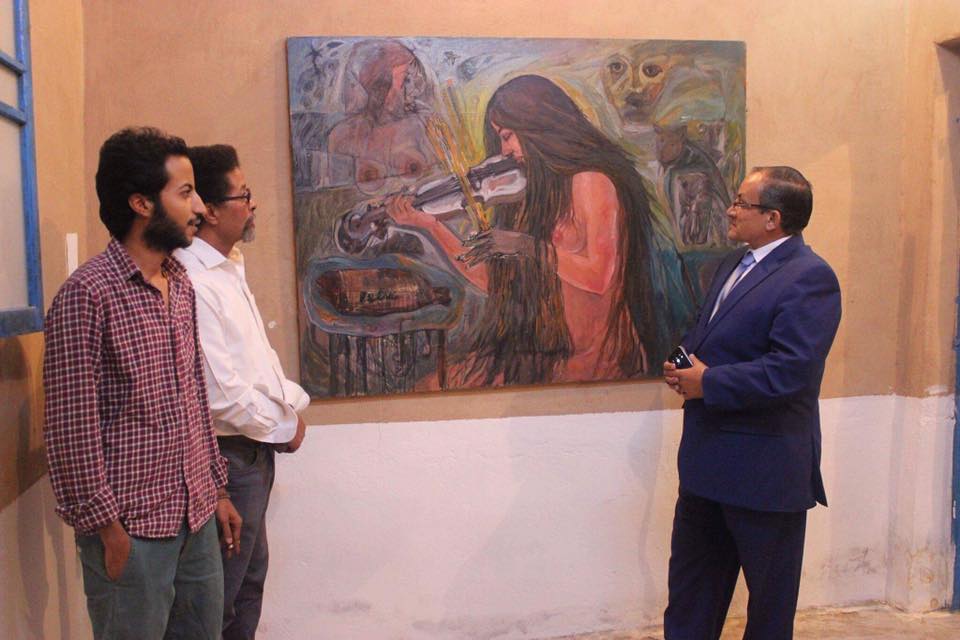There’s no denying the effects a painting can have on a viewer–it may arouse a sense of awe or beckon a dark mood, or it may leave us questioning what art actually is and if this piece even qualifies. But can the effect of a piece of art on its viewers be related to the mood of the artist as he produced it? Are viewers more likely to get a “good vibe” from a painting by an artist who was in a positive mood while completing his work, than by an artist who felt progressively more miserable with every brush stroke?
For Leela Esmat, her current art exhibition, "A Moment out of Time," is a testament to her belief in such a relationship. Esmat is both a painter and certified master of Reiki (a technique of Japanese origin whose practitioners believe they can transmit life–or cosmic– energy through their hands to heal basic ailments).“
I never paint while I’m in a bad mood,” says Esmat, explaining her belief that negative energy can be transmitted from the artist, resulting in a bad vibe radiating from the end product. “I always make sure I’m in a serene, positive mood when I paint,” she assures, “and I put Reiki healing energy in all my paintings.”
According to Esmat, her paintings–which are for sale– can offer healing and protection, and she says the common reaction among observers throughout the opening of her exhibition last Saturday was surprise at how good they felt upon viewing her works. “It makes you feel positive when you look at them,” says Esmat, who adds that many of the viewers did not know about the Reiki aspect to her paintings.
Esmat tries to demonstrate this positive trait in her work by taking out her pendulum: a finger-length wooden weight attached to a piece of thread. Holding the thread from its tip, she explains that when placed over a certain item to measure its energy output the pendulum spins clockwise if the item’s energy is positive, and counter-clockwise if it has bad energy.
Placed over an ashtray for a demo, the pendumlum quickly spun counterclockwise, while when Esmat later moved it in front of one of her paintings, it moved in the opposite direction to denote the positive energy purportedly streaming from it.
While for some thinking people this may all sound rather questionable, one thing that’s less debatable is that there is something very cheery about Esmat’s paintings. With vibrant magentas and greens, and impressionistic depictions of freely whirling dervishes and smiley puppets common throughout her 29 pieces on display, one would be hard-pressed to feel subdued after seeing her vivacious work.
And, colors and energies aside, Esmat has also dedicated much thought to symbolism in her work, primarily in this case to the folkloric aragoz, or traditional Egypt puppet, who is a recurring character in many of her pieces.
“The aragoz, in our folk literature, represents a sort of street-wise witness to the troubles of our times,” she says, "and during the Mamluk period it was often used in the streets to deliver criticisms of the authorities using sarcasm and humor.” Esmat says however that she does not intend to make a political statement through her work, but merely depicts the aragoz for its animated and festive flair.
Esmat has a PhD in Egyptian folklore and a master’s in anthropology. Her first exhibition was in 2002, and pushing her to explore painting further are ideas about the relation between the attitude of the artist when creating a work, and the (potentially therapeutic) impact of the artist’s creation on those viewing it.
A bit unusual? What kind of decent artist isn’t, at least a little? Decide for yourself.
5+5 Art Gallery: 8, Talaat Harb Square, 1st floor, Downtown, Cairo
Until Sunday, 31 January, 2010




